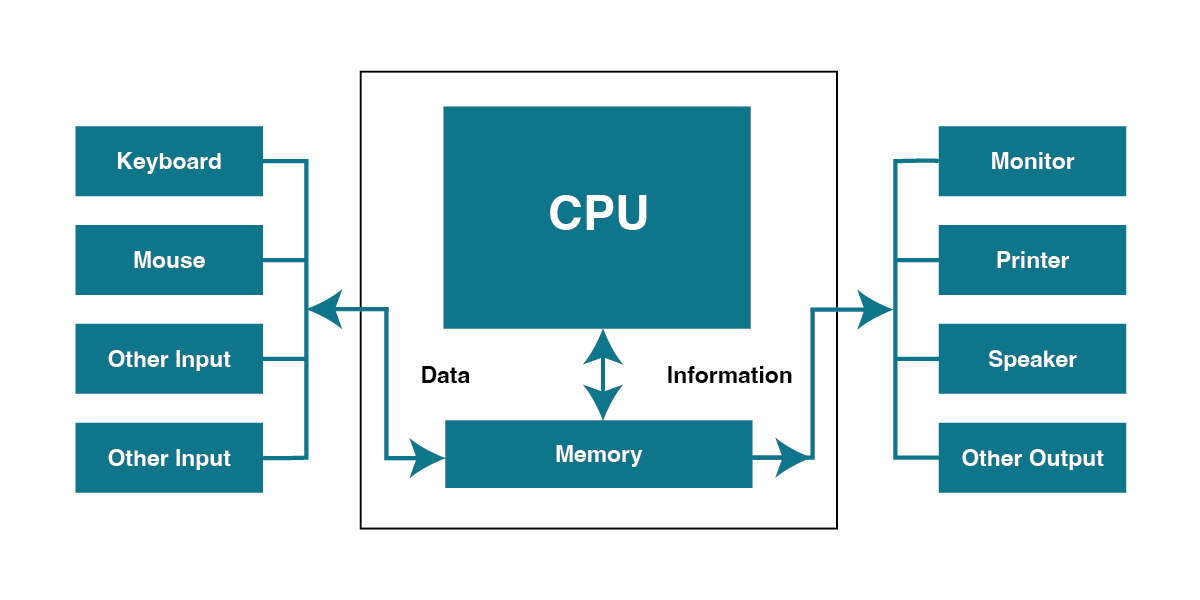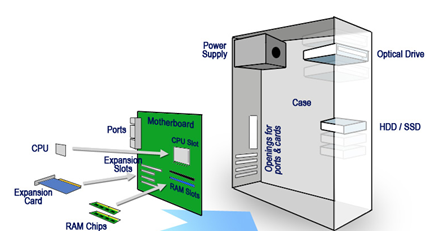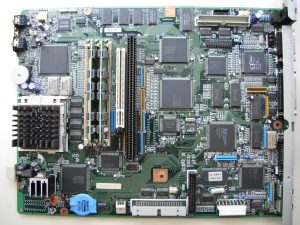3.3. Personal Computer Tour
Computers are machines that accept data as input, process that data using stored instructions, and output the information.

All personal computers consist of the same basic components:
- network connection
- motherboard
- central processing unit (CPU)
- storage/memory
- input/output devices
Almost every digital device uses the same set of components, so examining the personal computer will give you insight into the structure of various digital devices. The components will be explored in more detail in the following sections.

Network Connection
Personal computers were first developed as stand alone units, which meant that data was brought into the computer or removed from the computer via removable media (i.e. hard drives, USB devices, CD’s). However, beginning in the mid-1980s, organizations began to see the value in connecting computers together via a digital network. Because of this, personal computers needed the ability to connect to these networks. Initially, this was done by adding an expansion card to the computer that enabled the network connection. These cards were known as Network Interface Cards (NIC). By the mid-1990s, an Ethernet network port was built into the motherboard on most personal computers. As wireless technologies began to dominate in the early 2000s, many personal computers also began including wireless networking capabilities. Digital communication technologies will be discussed further in Chapter 6.
Motherboard

The motherboard is the main circuit board on the computer. The CPU, memory, and storage components, among other things, all connect into the motherboard. Motherboards come in different shapes and sizes, depending upon how compact or expandable the computer is designed to be. Most modern motherboards have many integrated components, such as network interface card, video, and sound processing, which previously required separate components.
The motherboard provides much of the bus of the computer (the term bus refers to the electrical connections between different computer components). The bus is an important factor in determining the computer’s speed (the combination of how fast the bus can transfer data and the number of data bits that can be moved at one time). The traces shown in the image are on the underside of the motherboard and provide connections between motherboard components.
“Chapter 2: Hardware” from Information Systems for Business and Beyond (2019)by David Bourgeois is licensed under a Creative Commons Attribution-NonCommercial 4.0 International License, except where otherwise noted.

